The twilight language explores hidden meanings and synchromystic connections via onomatology (study of names) and toponymy (study of place names). This blog further investigates "name games" and "number coincidences" found in news and history. Examinations are also found in my book The Copycat Effect (NY: Simon and Schuster, 2004).
Friday, January 28, 2011
King Tut In Danger
The revolutions and overthrowing of governments across the Arab world that have been sparked by self-immolations may result in a danger for ancient treasures. The Egyptian Army reportedly has secured the Egyptian Museum in Cairo, in an attempt to protect the treasures from the era of the pharaoh kings, including the death mask of the boy king, Tutankhamun, according to a bulletin from Reuters.
Tuesday, January 25, 2011
Facebook Immolations
The Middle East has erupted, set afire, literally, by fire suicides. Today, it was Egypt. Leaders throughout the Arab world do not know what nation will be touched next. The copycat effect is clearly very real.
In the past, the news of politically-based self-immolations were spread by television news and newspapers. Today, it is Facebook and Twitter that are telling the word what is going on in the Middle East, in mass protests throughout the region.
Reports throughout several Arab countries tell of at least 13 self-immolations having occurred since the fiery suicide of Mohamed Al Bouazizi, a Tunisian man who helped topple his government. But the Jerusalem Post is stating today that at least six new cases of self-immolations have occurred in Egypt. News services are losing count of the widespread number of reports of immolations.

The 26-year-old Tunisian fruit vendor (shown in hospital before his death) doused himself with gasoline on December 17, 2010, to protest his alleged mistreatment by local officials. His death on January 4, 2011, caused the public outrage that collapsed the government of President Zine el-Abedine Ben Ali.
"This was really the spark, literally and figuratively, that set Tunisia on fire," said Sultan Sooud Al Qassemi, a non-resident fellow at the Dubai School of Government.
Following Bouazizi's example, at least 13 men, most of them in Egypt and Algeria but one each in Saudi Arabia, Morocco and Mauritania, have been involved in self-immolations. Here is a partial list: five Algerians - Jan. 13, 15, 16; one Mauritanian and four Egyptians - Jan. 17, 18.

Over the weekend, an unidentified Saudi Arabian man set himself on fire in that country's first self-immolation, reported the BBC. The incidents are part of a wave of protest in North Africa and the Arabian peninsula. Protestors filled the streets in Jordan, Egypt, Algeria and Yemen this weekend. Activists in Algeria were met with batons, while n Yemen, protestors demonstrating in support of the Tunisian revolt called for their president to step down. President Ali Abdullah Saleh has ruled Yemen for 32 years, first as president of North Yemen from 1978 to 1990, and as head of the consolidated country ever since.

Egyptian demonstrators protest in front of the Tunisian embassy in Cairo, Egypt, Saturday, Jan. 15, 2011, in support of Tunisian national protests which have swept the North African Arab country after its longtime president was forced out by protests. Arabic signs read 'revolution in Tunis, tomorrow in Egypt'.
Today, January 25, 2011, saw thousands of anti-government protesters (above) inspired by the Tunisian revolution clashed with riot police in the centre of Cairo today demanding the overthrow of president Hosni Mubarak.
Police responded with water cannon and attacked crowds with batons and tear gas to clear crowds demanding an end to the country's grinding poverty.
The prostest, the largest Egypt has seen for years, began peacefully, with police showing unusual restraint in what appeared to be a concerted government effort not to provoke a Tunisia-like mass revolt.
To the north, in the Mediterranean port city of Alexandria, thousands of protesters also marched in what was dubbed a 'Day of Rage' against Mr Mubarak and lack of political freedoms under his rule.
In another parallel with the Tunisia protests, the calls for rallies went out on Facebook and Twitter, with 90,000 saying they would attend.
Self-immolations were a frequent form of protest in South Vietnam in the 1960s. A Buddhist monk set himself on fire in 1963 to protest alleged persecution of Buddhists by the regime of President Diem, inspiring multiple copycats. Then immolations were used by anti-Vietnam War protestors in the U.S. in the sixties and Eastern European foes of Soviet domination employed the technique in the 1960s, 1970s, and 1980s.
Indeed, as the New York Times noted over the weekend, "Jan Palach, a 20-year-old Czech who burned himself to death in Prague in 1969 a few months after the Soviet invasion of his country, is remembered as a martyr of the struggle against Communism....suicide sometimes spreads like a disease, especially when heavily covered in the media."
All of the fire suicides we are reading about during the last month are most certainly copycats.
Tuesday, January 18, 2011
Immolation Copycats 2011
Worldwide, we are in the midst of a wave of political
immolation copycats, with at least seven
deadly incidents being recorded since
the spark was ignited a month ago in Tunisia.
As I wrote in The Copycat Effect, one of the most imitated public and political forms of self-death is the fire suicide.
More protesters set themselves on fire in Egypt, Mauritania and Algeria on Monday, January 17, 2011, in apparent copycat fiery suicide attempts inspired by the act that helped trigger a popular uprising in Tunisia. Besides the Tunisian and Egyptian accounts, reports of fire suicides in four Algerian towns and in the capital of Mauritania have circulated in the past five days.
One incident involved a man setting himself on fire outside of parliament in the Egyptian capital. Policemen guarding Cairo's parliament building and some passers-by used fire extinguishers to put out the blaze surrounding Abdou Abdel-Monaam Hamadah, 48. He was taken to the hospital with burns on 60 percent of his body.
Egyptian Abdou Abdel-Monaam Hamadah is shown in a hospital in Cairo on Monday after setting himself on fire on a busy street in front of the People's Assembly. His hospital image was broadcast throughout the Arab world.
Another was of a Mauritanian man who set himself on fire in front of presidential palace in Nouakchott, the Mauritanian capital, in an echo of suicide that triggered Tunisia uprising. Yacoub Ould Dahoud, 40, a company director and member of a wealthy family, was upset about alleged government mistreatment of his tribe. Dahoud doused himself with gasoline while sitting in his locked car in front of the presidential palace and set himself on fire. He was rescued by security forces and bystanders who broke open his car windows. He was taken to the hospital with burns.
Four men in four different Algerian towns also set themselves on fire in the past week, Reuters reported. One of the men died after setting himself on fire at a government building in Algeria, state radio reported on Sunday, also echoing the self-immolation that triggered the protests that toppled the leader of neighboring Tunisia.
Mohsen Bouterfif doused himself in gasoline and set himself on fire on Thursday, January 13, after a meeting with the mayor of the small city of Boukhadra who was unable to provide him a job and a house, the daily El Khabar newspaper said. He died on Saturday of his burns.
The photographs being published are often graphic. Mohsen Bouterfif is shown in the hospital, after he doused himself in gasoline and set himself on fire.
About 100 young men protested over Mohsen's death in the town, in Tebessa province, 700 km east of Algiers. The governor of the province sacked the mayor, El Khabar said.
Several Algerian towns, including the capital Algiers, have experienced riots in recent weeks over unemployment and a sharp rise in the prices of food staples.
Official sources say two people have been killed and scores were injured during the unrest, which unfolded in parallel to street violence in Tunisia and demonstrations over high food prices in other North African and Middle Eastern countries. To calm the protests, Algeria has cut the cost of sugar and cooking oil.
The fall of Tunisian President Zine al-Abidine Ben Ali on Friday -- the first time in generations that an Arab leader has been toppled by public protests -- sent a sharp signal to the rest of the region, dominated by autocratic regimes.
The fall of Tunisian President Zine al-Abidine Ben Ali on Friday -- the first time in generations that an Arab leader has been toppled by public protests -- sent a sharp signal to the rest of the region, dominated by autocratic regimes.
The protests that brought down Ben Ali erupted after the self-immolation of 26-year-old vegetable seller Mohamed Bouazizi, who set himself on fire on December 17, 2010. Bouazizi died weeks later of his burns, becoming a martyr to crowds of students and the unemployed protesting against poor living conditions.
The incidents reflect the growing despair among the public of many Arab regimes resisting reform. They are deeply symbolic means of protest in a region that has little or no tolerance for dissent.
It was the self-immolation of Mohamed Bouazizi, a 26-year-old unemployed man in Tunisia last month that sparked the tidal wave of protests that toppled President Zine El Abidine Ben Ali last week. A total of 78 people have been killed since the start of unrest in Tunisia, the country's interior minister told the media on January 17th.
Ben Ali ruled with an iron fist for 23 years, time spent in the company of similarly authoritarian rulers across much of the Arab world like Libya's Moammar Gadhafi, in power since 1969, Egypt's Hosni Mubarak, in office since 1981, and Yemen's Ali Abdullah Saleh, who has ruled that impoverished nation since he seized power more than 30 years.
The stunning collapse of the Tunisian leader drew a litany of calls for change elsewhere in the Arab world, but activists faced the reality of vast security forces heavily vested in the status quo and hard-line regimes that crack down on dissent.
The men who have set themselves alight in recent days appeared to be inspired by the self-immolation of Tunisian Mohamed Bouazizi, a university graduate whose fruits and vegetables market stand was confiscated by police because it had no permit. His death touched a nerve with educated, unemployed youths in the North African country, prompting the mass protests that toppled Ben Ali.
Self-immolation as a method of protest is uncommon in the Arab world, where many associate it with protesters in the Far East or the Indian subcontinent. But Egyptian women in rural or poor urban areas have been known to set themselves on fire to protest violent husbands, abusive parents or an unwanted suitor.
"It is clear that Tunisia and its events had an impact on Egypt as well as Algeria," said veteran Egyptian columnist Salama Ahmed Salama. The attempted self-immolation in Cairo on Monday, he added, will be a "worrying element to the government."
Arab political spokesmen are trying to put a calming spin on the impact of the fire copycats. Egyptian Foreign Minister Ahmed Abul Gheit ruled out the possibility that Tunisia's political uprising will spread.
+++
Update, as per the comment below: The copycat immolations are spreading. A 16-year-old French boy was rushed to a local hospital on Tuesday (January 18, 2011) in critical condition after setting himself on fire at his Marseille private school. Meanwhile, also, an 18-year-old schoolboy from the southwestern town of Bordeaux, France, has been in a coma since November 18, 2010, when he set himself on fire in his school.
+++
Update, as per the comment below: The copycat immolations are spreading. A 16-year-old French boy was rushed to a local hospital on Tuesday (January 18, 2011) in critical condition after setting himself on fire at his Marseille private school. Meanwhile, also, an 18-year-old schoolboy from the southwestern town of Bordeaux, France, has been in a coma since November 18, 2010, when he set himself on fire in his school.
Sunday, January 16, 2011
Congress Style Assassinations
In American history, there has been a relatively small number of members of Congress who have been killed or wounded while in office. Not all members included in the list were the targets of assassins. Some died in duels or were not intentionally targeted. This list does not include instances when members died in accidents or suicides. Fourteen members have been killed and eight have been seriously wounded by assailants. Additionally, the circumstances surrounding the deaths of at least three members are disputed and they may have died as a result of natural causes or accidents.
The four incidents below are the ones recalled by the media in the wake of the Giffords shooting. But the list is a long one. See below.
Rep. Jonathan Cilley
Jonathan Cilley of Maine was killed in a duel with Rep. William Graves of Kentucky Feb. 24, 1838. Cilley had accused Graves of bribery on the floor of the House to which Graves responded by challenging him to a duel with pistols.
Graves killed Cilley after three rounds. After the duel, the House voted to ban all forms of dueling between members in Washington, D.C. Although the House considered censuring Graves, not enough votes were garnered and Graves was largely unpunished for killing one of his colleagues.
Sen. Charles Sumner
Reps. Preston Brooks and Laurence Keitt, both of South Carolina, severely beat Sen. Charles Sumner of Massachusetts so badly he needed three years to recover. Brooks beat Sumner over an anti-slavery speech that verbally attacked Sen. Andrew Butler of South Carolina, a relative of Brooks.
Brooks and Keitt eventually resigned after the House voted to censure Keitt and the state of Maryland prosecuted Brooks. The assault, which took place May 22, 1856, was a precursor of tensions between the north and south which would eventually lead to the Civil War.
Puerto Rican Nationalists
Four Puerto Rican nationalists stormed the Capitol March 1, 1954. The House was in session as they were taking a vote regarding the employment of Mexican migrant workers.
Five Congressmen were wounded by gunfire from the visitor's gallery: Alvin Bentley of Michigan, Ben Jensen of Iowa, Clifford Davis of Tennessee, George Fallon of Maryland and Kenneth Roberts of Alabama. All five survived the 30 shots which rang out from above the floor. All four perpetrators were eventually sentenced to long prison terms.
Rep. Leo Ryan
Rep. Leo Ryan of California made a trip to Guyana to try to ascertain why members of his congressional district were disappearing into the jungle. When he and his team attempted to leave by airplane the encampment of cult leader Jim Jones of People's Temple, five of Ryan's delegation including Ryan were killed in an ambush November 18, 1978, at the airfield.
The Ryan incident was the last time a sitting member of Congress was assassinated. Ryan's assistant Jackie Speier who survived the attack, went on to serve in the California legislature 20 years before being elected to Congress in 2008.
The complete listing from Wikipedia is below.
Members of Congress Assassinated:
| Spencer Pettis | – | Missouri (1st at-large seat) | August 28, 1831 | Thomas Biddle | Both Pettis and Biddle sustained fatal gunshot wounds during a duel on Bloody Island in Illinois.[1] | |
|---|---|---|---|---|---|---|
| Jonathan Cilley |  | Maine (3rd district) | February 24, 1838 | William Graves | Cilley was shot by Graves, the Whig Congressman from Kentucky's 8th district, during a duel on the Marlboro Pike inMaryland.[1] | |
| John Montgomery | – | Pennsylvania (12th district) | April 24, 1857 | Unknown(disputed) | Multiple people staying at the National Hotel in Washington, D.C. died of National Hotel Disease during this time period. It is disputed whether the "disease" was an attempt to poison hotel boarders or simply a case of accidental food poisoning.[1] | |
| John Quitman | 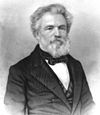 | Mississippi (5th district) | July, 17, 1858 | |||
| David Broderick |  | California (senator) | September 13, 1859 | David Terry | Broderick and Terry, the Chief Justice of the Supreme Court of California, took part in a duel in San Francisco. Broderick was shot and died three days later.[1] | |
| Edward Baker |  | Oregon (senator) | October 21, 1861 | 7th Brigade, 4th Division of the Confederate Army of the Potomac (under the command of Nathan Evans) | Baker died during the Battle of Ball's Bluff, while assigned command of a brigade in Brigadier General Charles Pomeroy Stone's division, guarding fords along thePotomac River in Virginia. The Confederate soldiers were commanded by Brigadier General Nathan George Evans.[2][3] | |
| Cornelius Hamilton | – | Ohio (8th district) | December 22, 1867 | Thomas Hamilton | Hamilton was killed by his mentally ill 18-year-old son, Thomas, in Marysville, Ohio.[1][4] | |
| James Hinds | – | Arkansas (2nd district) | October 22, 1868 | George Clark | Hinds was killed in Indian Bays in Monroe County, Arkansas after being shot in the back by George A. Clark, a member of the Ku Klux Klan and the secretary of the Democratic committee of the county.[1][5][6] | |
| John Pinckney |  | Texas (8th district) | April 24, 1905 | Unknown (riot started by J. N. Brown) | A political event in Hempstead,Texas turned violent when one of the participants, J. N. Brown, began shooting. Other attendees began to shoot as well and a riot broke out. Pickney, his brother Tom, and Brown were all killed at the scene.[1][7] | |
| Huey Long |  | Louisiana (senator) | September 8, 1935 | Carl Weiss(disputed) | Long died two days after Weiss fired a handgun at him at close range inside the Louisiana State Capitol in Baton Rouge. More recent evidence suggests that Long's bodyguards may have accidentally shot and killed Long when they open fire on Weiss, who was killed at the scene.[8][9] | |
| Thomas Schall | 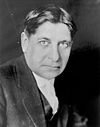 | Minnesota (10th district) | December 19, 1935 | Lester Humphries | Schall was hit by a car being driven by Lester G. Humphries as he was walking across the Baltimore–Washington Parkway in Cottage City, Maryland; he died three days later. Humphries was arrested for reckless driving.[10][11] | |
| Robert Kennedy | 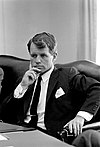 | New York (senator) | June 5, 1968 | Sirhan Sirhan | Kennedy was shot at the Ambassador Hotel in Los Angeles after giving a speech for his presidential campaign; he died about 25 hours later.[12] | |
| Leo Ryan |  | California (11th district) | November 18, 1978 | Peoples Temple (under the direction of Jim Jones) | While on an official visit to Guyana to investigate the activities of the Peoples Temple cult led by Jim Jones, Ryan was shot multiple times while attempting to board an airplane leaving Jonestown.[13] | |
| Larry McDonald |  | Georgia (7th district) | September 1, 1983 | Soviet Far East District Air Defense Forces (under orders from Anatoly Kornukov) | McDonald was a passenger on board Korean Air Lines Flight 007 which was shot over the Sea of Japan near Sakhalin island by Soviet interceptors per the orders of General Kornukov, Commander of Sokol Air Base.[14] |
Members of Congress Wounded:
| Charles Sumner |  | Massachusetts (senator) | May 22, 1856 | Preston Brooks | Representative Preston Brooks, a Democrat from South Carolina's 4th district, assaulted Sumner with a cane on the floor of the Senate in the Capitol Building in Washington, D.C. The attack followed Sumner's verbal attacks on pro-slavery politicians.[15] | |
|---|---|---|---|---|---|---|
| Josiah Grinnell | 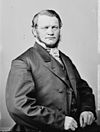 | Iowa (4th district) | June 14, 1866 | Lovell Rousseau | Grinnell was assaulted with an iron-tipped cane by Rousseau, anUnconditional UnionistCongressman from Kentucky's 7th district, on the east portico of the Capitol Building in Washington, D.C., in retaliation for derogatory statements he made earlier. Grinnell was pummeled on the "head and face until the cane broke," and was heavily bruised.[16] | |
| Alvin Bentley | 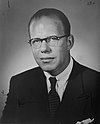 | Michigan (8th district) | March 1, 1954 | Rafael Cancel Miranda, Andres Figueroa Cordero, Irving Flores Rodríguez, Lolita Lebrón | In an event known as 1954 United States Capitol shooting incident, armed Puerto Rican nationalists shot and wounded five representatives from the Ladies Gallery of the House of Representatives in the Capitol Building in Washington, D.C.[17] | |
| Clifford Davis | 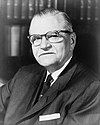 | Tennessee (10th district) | ||||
| George Fallon | 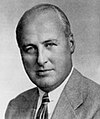 | Maryland (4th district) | ||||
| Ben Jensen |  | Iowa (7th district) | ||||
| Kenneth Roberts |  | Alabama (4th district) | ||||
| Gabrielle Giffords | 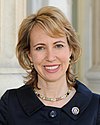 | Arizona (8th district) | January 8, 2011 | Jared Loughner (alleged) | Giffords was shot in the head during the 2011 Tucson shooting, which occurred at a constituency meeting held in a supermarket parking lot in Casas Adobes, Arizona.[18] |
Subscribe to:
Comments (Atom)






